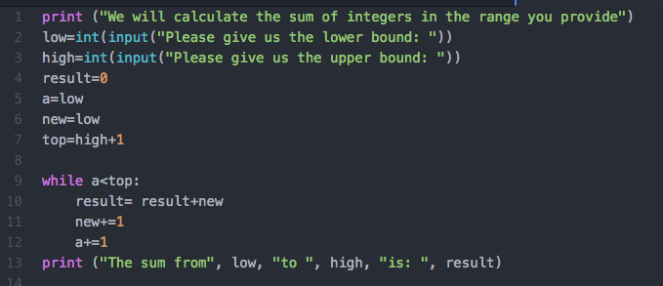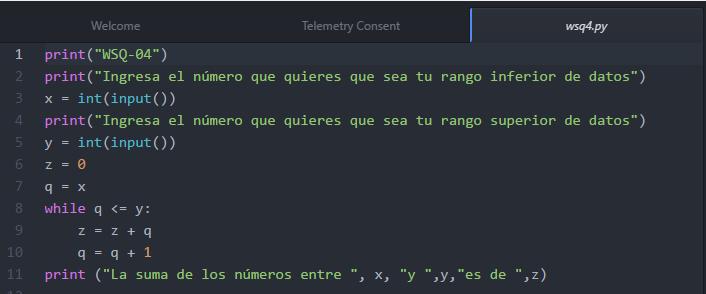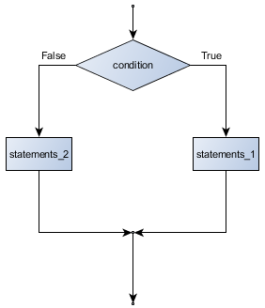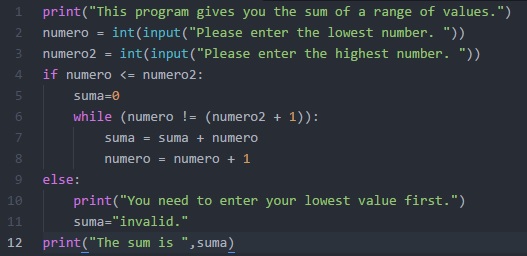--Originally published at Tomas Enciso
This program asks the user for two numbers, those numbers act as a range, this function grabs the two numbers and sums all the numbers between those two numbers including themselves.
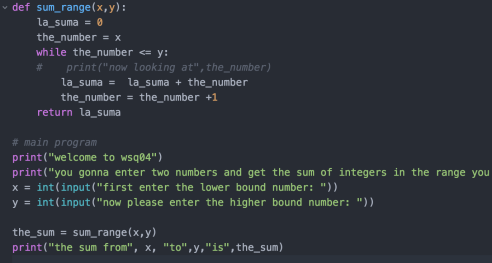

In the first run I used 1 and 2 which the result is 3, and in the second run I used 5 and 10 and the result was 45. for the function I used a counter that kept adding 1 to the number the user inserted and each time that the while loop started again it kept adding to the sum until the lower bound number reached the higher bound.



